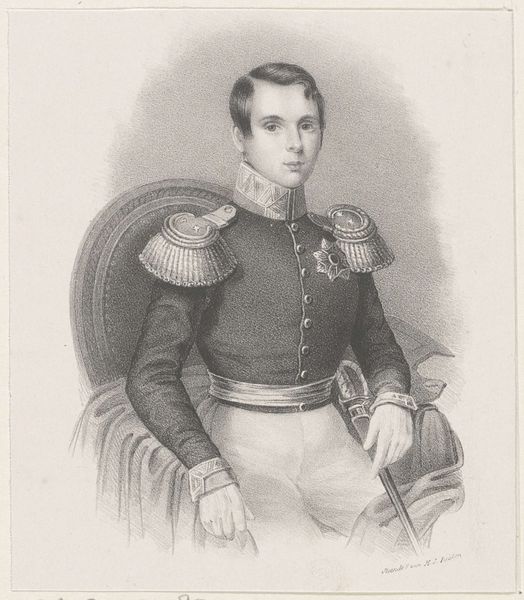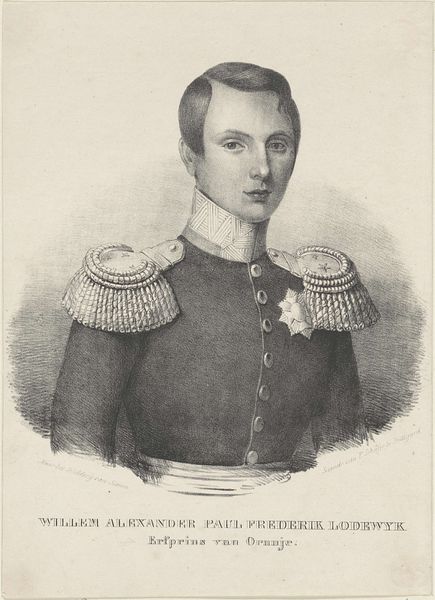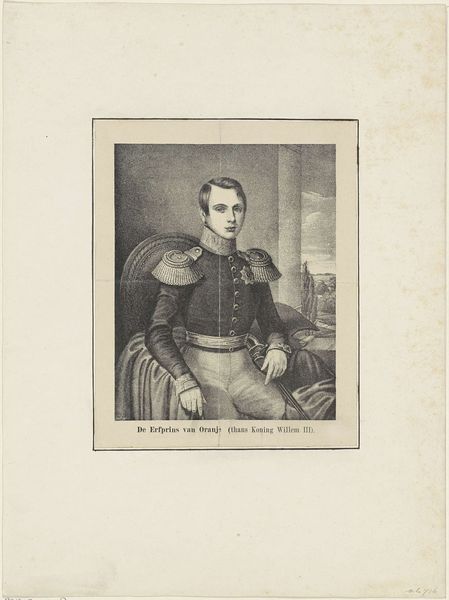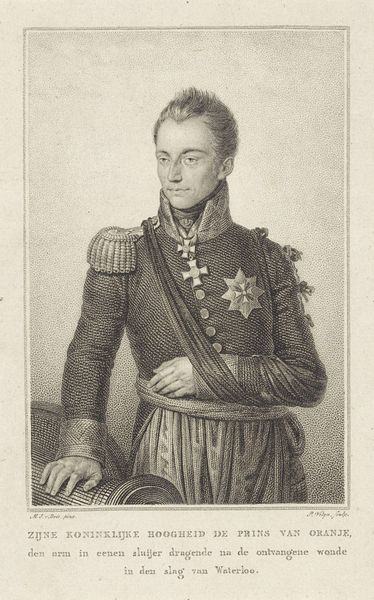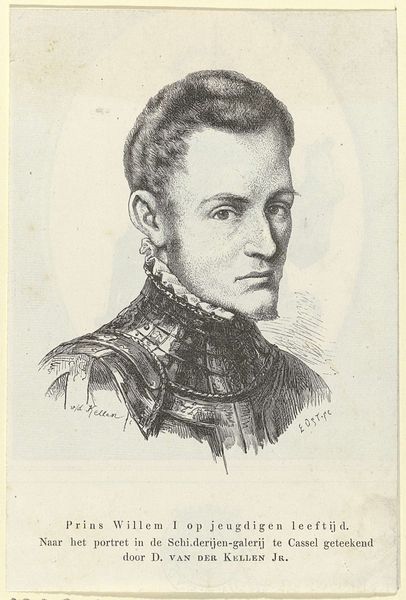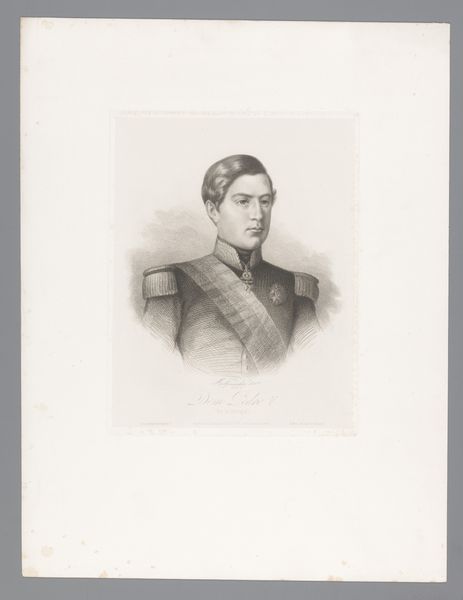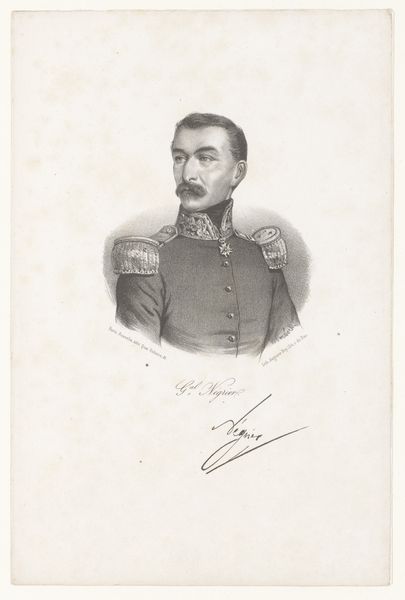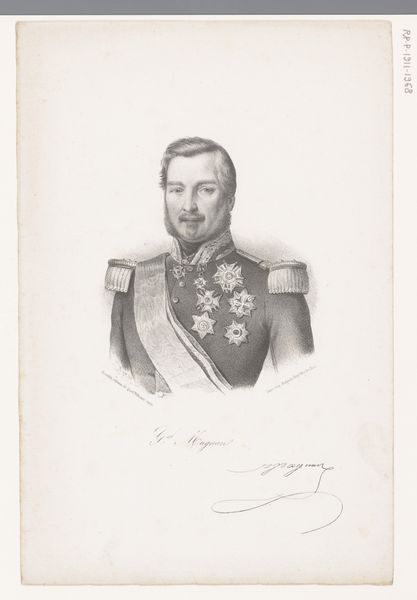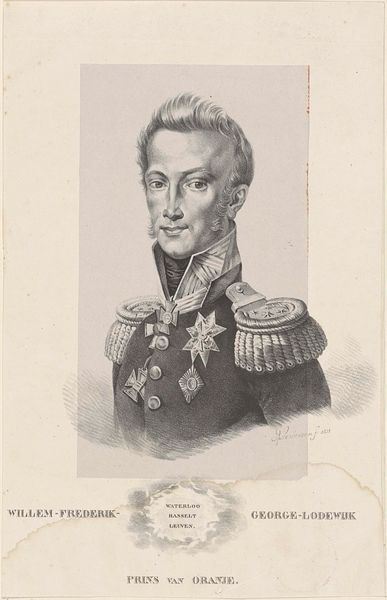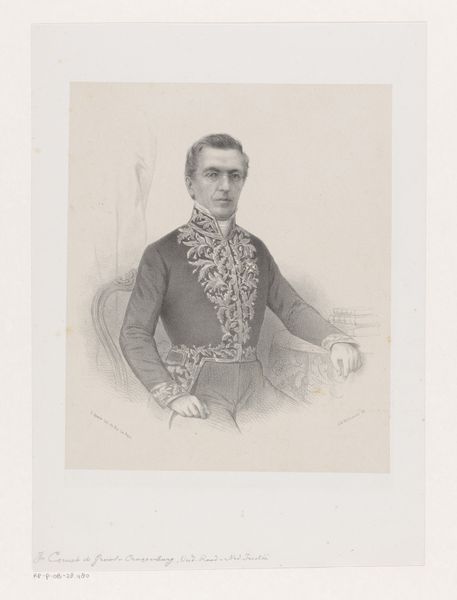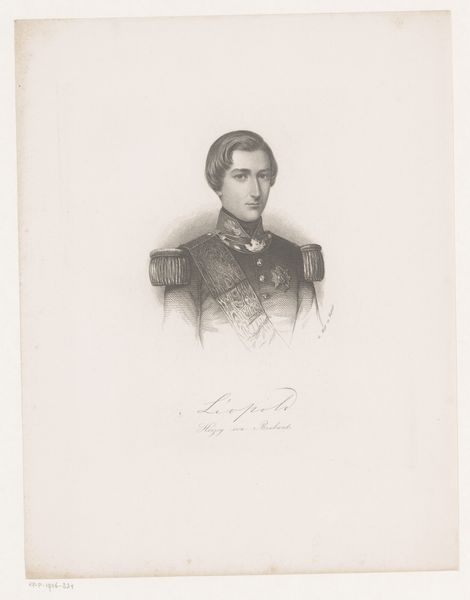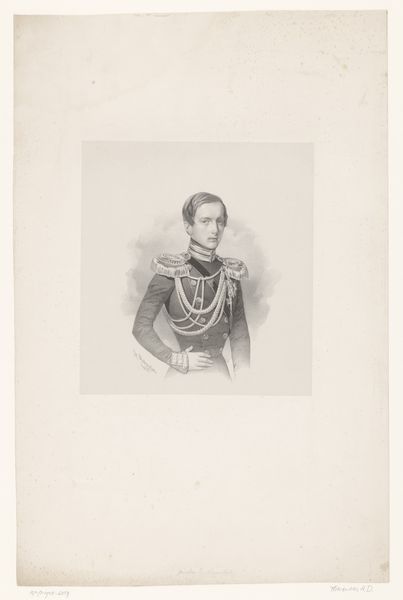
drawing, engraving
#
portrait
#
drawing
#
pencil drawing
#
academic-art
#
engraving
Dimensions: height 110 mm, width 85 mm
Copyright: Rijks Museum: Open Domain
Curator: We are now standing before "Portret van een man met epauletten," or "Portrait of a Man with Epaulettes" by Isaac Weissenbruch. The work is a drawing and engraving. It has an indeterminate creation date from 1836 to 1912, so Weissenbruch might have worked on this at any point. Editor: My initial impression is one of crisp formality. The portrait exudes a certain reserved confidence. It’s rendered so meticulously in black and white that the lines themselves carry significant weight. It seems to embody classical structure with high contrast. Curator: Indeed, and given Weissenbruch's interest in portraying Dutch society, it's essential to consider the social and political context. Portraits like this were commissioned by those seeking to establish their presence and legitimacy. The epaulettes tell us that this gentleman may be a Dutch military or political leader. Editor: Yes, observe the texture and the layering, created purely through skillful use of hatching. Consider, too, how the eye is drawn from the face down through the geometric forms of the torso with its military coat. Notice, furthermore, how those ornamental epaulettes work in dialogue with the delicate precision of his expression. Curator: Right. Engravings and drawings like these served the critical function of disseminating information about prominent figures to a wider audience. The work offered a readily reproducible image during a period when photography was still developing. His identity is then carefully framed through clothing, jewelry, and rank. Editor: This interplay between stark realism in detail and stylized idealization in form is where the real drama lies. Look closely at his face. The soft modeling there pulls our focus back up toward human expressiveness even amidst all this regimented detail, which brings balance and allows this man's portrait to come to life on a human level. Curator: Weissenbruch uses portraiture to tell us about the structures of power and recognition in his era. As historians, we look for traces of social practices. How are leaders meant to be seen? How do portrait conventions reinforce political ideas? These are core considerations. Editor: Through formal rigor and careful consideration of tonal values and sharp linework, Weissenbruch brings the piece together. I find myself drawn to a stark kind of aesthetic pleasure even with its military themes. I see a carefully plotted landscape, constructed from lines on paper and deployed through shape. Curator: By exploring both the social role and aesthetic design of Weissenbruch’s "Portrait of a Man with Epaulettes," we have new routes through the image’s implications and nuances. Editor: Yes, considering both the historical conditions of its making and its aesthetic power enriches our experience, doesn’t it?
Comments
No comments
Be the first to comment and join the conversation on the ultimate creative platform.
